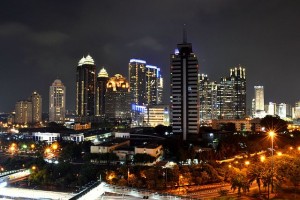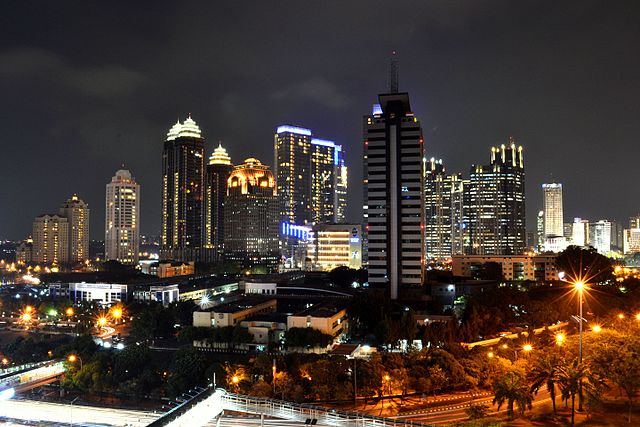 Indonesia’s economy grew by 5.04% in the fourth quarter of 2015 from the same period in 2014, the highest growth compared to the earlier quarters of 2015 and beating industry expectations as the efforts of President Joko Widodo to revive Southeast Asia’s biggest economy appear to be working.
Indonesia’s economy grew by 5.04% in the fourth quarter of 2015 from the same period in 2014, the highest growth compared to the earlier quarters of 2015 and beating industry expectations as the efforts of President Joko Widodo to revive Southeast Asia’s biggest economy appear to be working.
For the full year, the gross domestic product (GDP) grew by just 4.79%, according to the Ministry of Finance, as Indonesia has been suffering from a decline in commodity exports due to falling prices.
On the production side, the highest growth of 10.06% for the year was achieved by the information and communications sector. Meanwhile, on the expenditure side, the highest growth was contributed by government consumption expenditure of 5.38%.
Government spending rose 7.3% in the fourth quarter of 2015 from a year earlier and surged 41.3% from the previous three months. Household consumption grew 4.9% in the fourth quarter from a year earlier. But exports continued to flag, down 6.4% in the fourth quarter as the economic slowdown in China took its toll and the demand for the country’s commodities such as coal and palm oil continued to dip.
Statistics Indonesia said the country’s economy grew by 4.73% in the first quarter, 4.66% in the second, and 4.74% in the third. On a quarter-on-quarter basis, a contraction of 1.83% occurred in the fourth quarter of 2015. From the production side, this was driven by seasonal effect or a contraction of 23.34% in the agriculture, forestry and fisheries sectors. From expenditure side, this was caused by net exports decrease.
The finance ministry is targeting 5.3% expansion in 2016, driven by increased government expenditure on infrastructure and a more relaxed monetary policy by Bank Indonesia.
Amending export rules
As this developed, the government plans to amend the country’s export rules in a move to increase foreign exchange reserves, according to a high-ranking state official.
“Our exports are declining now. We will amend (the rules), which will necessitate exporters to bring their foreign exchange earnings (to the country),” Vice President Jusuf Kalla was quoted as saying by Antara News on February 12.
The recent decline in the country’s foreign exchange reserves was inevitable as several companies had repaid their foreign debts, he noted.
“As usual, many companies repay their debts at the start or end of year, while at the same time, the government also settles its foreign transactions,” he added.
Bank Indonesia (BI) stated on February 5 that the country’s foreign exchange reserves in January 2016 fell by US$3.8 billion to $102.1 billion from $105.9 billion in December 2015.
“The development is the outcome of the country’s foreign exchange needs, including the requirement to repay the government’s foreign debts, comprising the principal amount and interest on maturing global bonds,” the BI added.
The foreign exchange reserves as of late January 2016 were sufficient to finance 7.5 months of imports, or 7.2 months of imports and government debt repayments, and were above the international adequacy standard of three months of imports.
According to the central bank, the foreign exchange reserves were able to support the resilience of the external sector and ensure the country’s sustainable economic growth in future.
The country’s foreign exchange reserves at the end of December 2015 rose significantly by $5.7 billion to $105.9 billion from $100.2 billion a month earlier.
Photo: Muhammad Rasyid Prabowo





